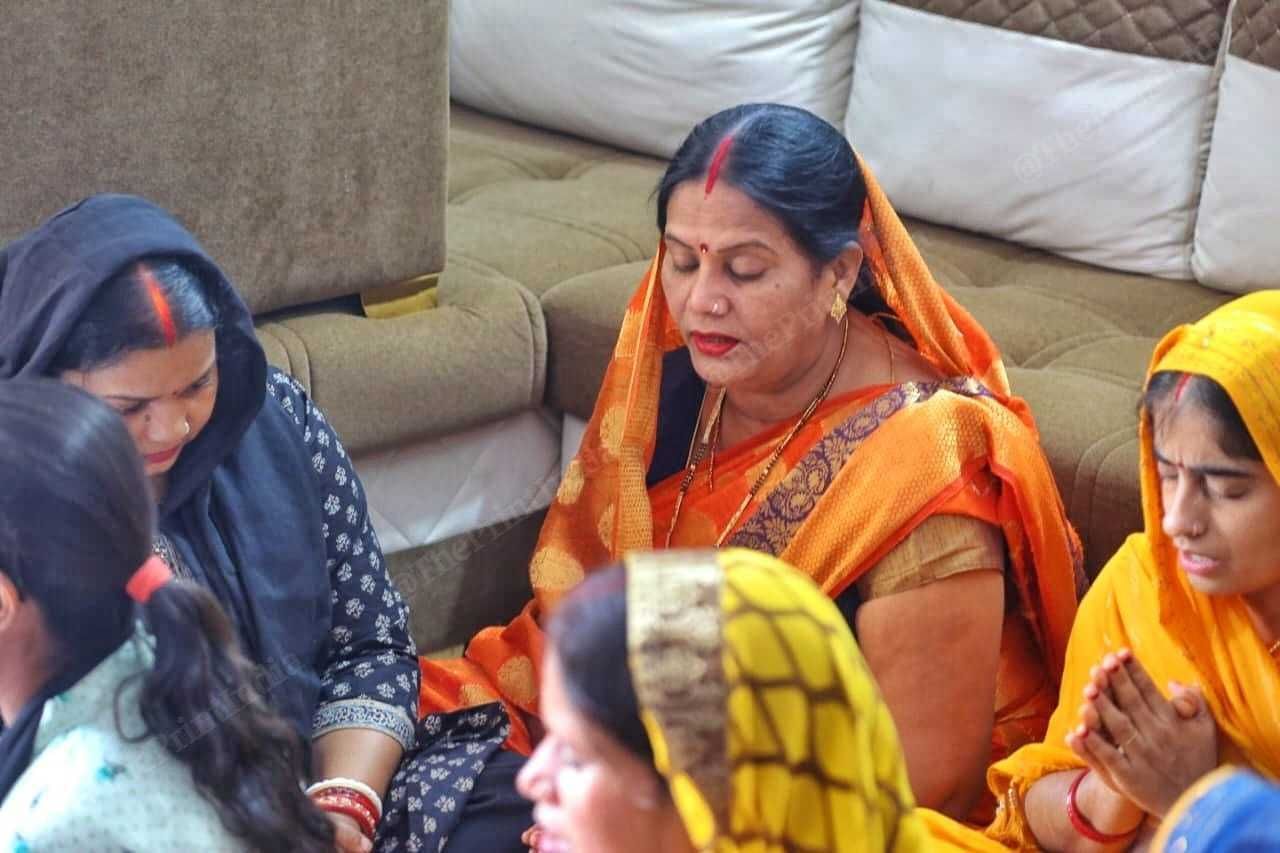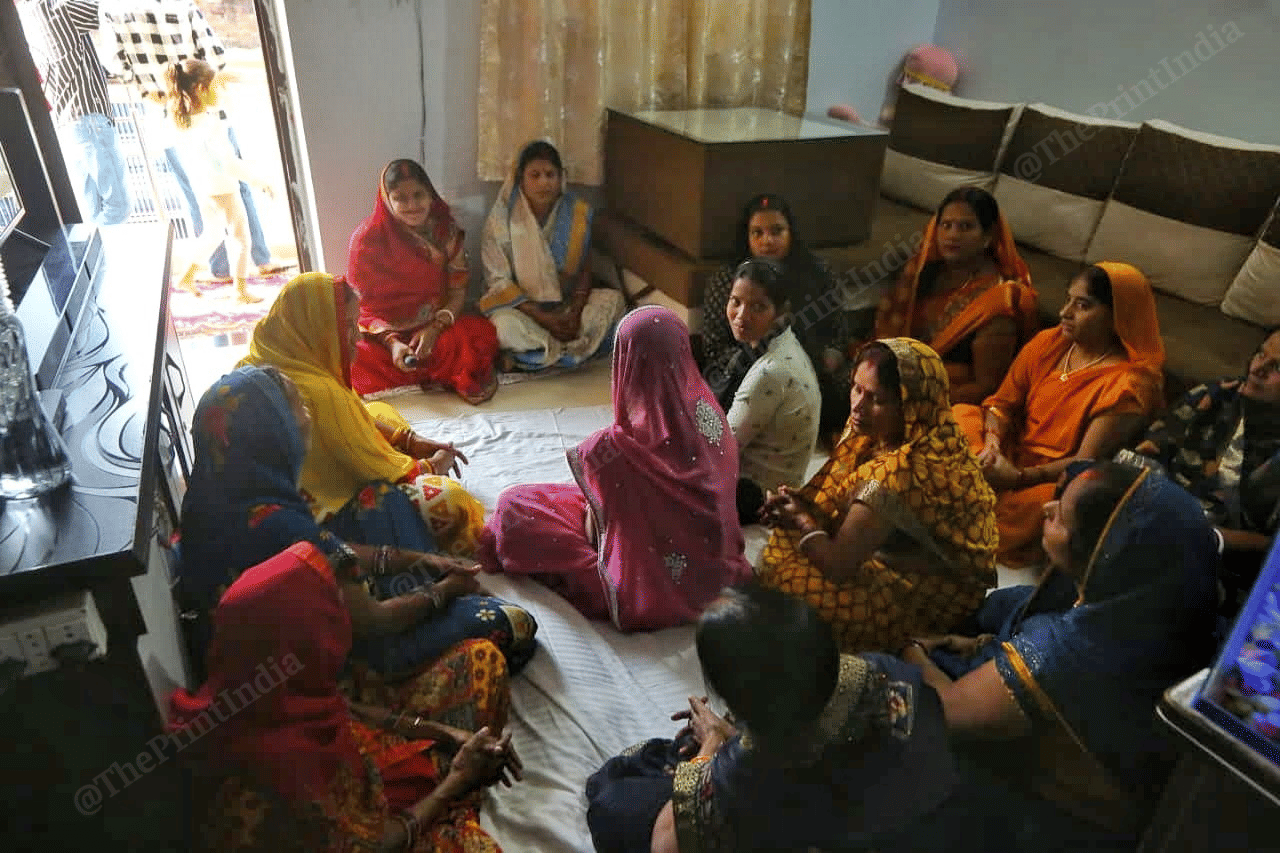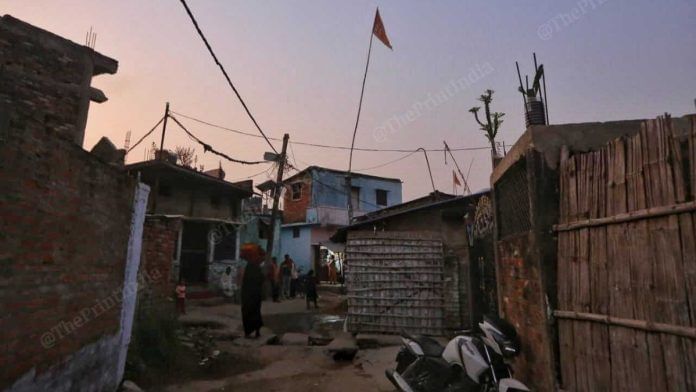Patna/Darbhanga: Geeta Devi Paswan is running a temperature ever since she took a dip in Kamala river during Chhath Puja. For the last few days, the 45-year-old mother of three has been convalescing at home. But a “Shiv Charcha” pioneer in her village, she perks up with delight when talking about events she has been organising for more than 15 years.
“It was in 2011 when Swami Harindranand came to Darbhanga and met some people,” she says, shifting fluently between Maithili and Hindi. “He was a big man, with a very powerful aura. But he met all of us with such respect. His only message was ‘make Shiva your sahib, and become his shishya (disciple)’.”
“He also said spread his message door to door…since then, I have committed myself to this task,” she tells ThePrint. For the last few years, every week, Geeta Devi gathers women in her village, who sit in the temple or in homes, and do ‘Shiv Charcha’. They sing bhajans, read the Shiva Puranas, and discuss morality, religiosity and culture—a group of women can congregate pretty much anywhere and hold the sessions.
Like Geeta Devi herself, all other women who attend the ‘Shiv Charcha’ in her village, Sobhan, are Dalits. The gatherings are acutely aware of the marginal religious position of their attendees. Special attention is given to ensure minimum rituals.
“We feel religiously and spiritually empowered,” Geeta Devi says. “For the ‘Shiv Charchas’ you don’t need any priests, any prior knowledge of grand rituals. Everything is taught simply and quickly,” much like a vernacularised crash course open to everyone.
But ‘Shiv Charchas’ are not restricted to Sobhan or indeed to Darbhanga. Over the last decade or so, the phenomenon has swept through northern and central Bihar—rapidly making it one of the most dominant forms of subaltern religiosity in the region.
While ‘Shiv Charchas’ initially appealed to women from ‘lower’ and ‘backward’ castes, the ease of conducting ‘Shiv Charchas’ and the lucidity of their message, has also attracted men and other dominant sub-castes towards.
Several young men and women—disciples of this new demotic religion—wear rudraksh bracelets. In cars across Patna, images of Shiva are ubiquitous. Bookshops stock slim booklets on Shiva devotion, in both English and Hindi. A quick YouTube search throws up dozens of ‘Shiv Charcha’ devotional songs in Bhojpuri, Maithili and Hindi. And in villages, saffron flags bearing Shiva’s image flutter unassumingly in the breeze.

Social activists claim the phenomenon is a product of the RSS’s efforts to gain a foothold in Bihar, where the Sangh has historically struggled to find firm ground. They say the “strategy” is to mobilise people around Shiva, who has much more of an organic following than Ram in Bihar, where Shivratri and Sawan have long been part of village religiosity.
To be sure, the ‘Shiv Charchas’ follow the RSS template of actively mobilising Dalits, tribals and other marginalised communities to assimilate them into the Hindutva metanarrative.
However, members of this new, mission-like Shiva cult in Bihar often don’t know of the RSS.
For them, ‘Shiv Charchas’ are an entirely apolitical, innocuous, and easily practiced form of democratic religiosity.
Also Read: Between idealism & survival: The Left’s long life in Bihar & its electoral pragmatism
Shiv Charcha—‘the magic pill’
“Sahib”, as Geeta Devi calls Harindranand, a Bhumihar, was a former collector, who gave up his cushy government job, and took to the path of devotion in 2011, she says. “He lived in Ranchi, and was simple like you and I, didn’t look like a quintessential baba,” she says, her eyes brimming with awe. “He told us three things. One, ask Sahib (Shiva) to make you his disciple. Two, spread his message. And three, do his naman (salutations) 108 times a day.”
“Everyone has known and worshipped Mahadev for centuries. But the ‘Shiv Charchas’ have given our faith a definite form,” she says. “It made sure that our religious faith also had organised form like the others,” she said, alluding to the ‘upper castes’.

When Geeta Devi started doing ‘Shiv Charchas’ among women, she was routinely met with a common refrain—‘we don’t know anything about this’. But she had already been trained well by her “Sahib”, Harindranand. Her job, he had told her, was precisely to handhold those who have not yet been “enlightened”.
“I would tell them calmly, ‘you just sit with me, and follow what I say’,” she says. “Now, there is no household that doesn’t do Shiv Charcha,” she says gleefully.
“If someone wants a son, daughter, job for their children, anything, we are called to do Shiv Charcha for them,” she says.
Ranjan Yadav, a driver, also says that for the last 20 about years, his mother has been actively involved in conducting ‘Shiv Charcha’. Boasting of its “simplicity” and “efficacy,” Yadav, who wears a Shiva rudraksh bracelet, admits that he too attends the charchas now. “They are not political at all. They are very simple ways of connecting with Mahadev. You just have to ask Mahadev to make you his disciple.”
‘An RSS programme’
Kanchan Bala, a veteran social activist in Patna, agrees that ‘Shiv Charchas’ have “exploded” in northern Bihar in the last one decade. “This practice did not exist at all here,” she says. “But in the last decade-and-a-half since the BJP has been in power at the Centre, and the RSS has become stronger than ever before, they have appeared on the scene out of nowhere, and exploded.”
“Earlier, they would be held in temples, now they are held in people’s homes,” she says, adding that the RSS has been behind this phenomenon. “This is how the RSS has mobilised Dalits and backwards across the country—by creating new forms of religiosity that makes them feel belonged.”
The Ram Mandir movement did not resonate in Bihar the way it did in Uttar Pradesh and other parts of the country right from the time of the Ramjanmabhoomi Aandolan in the 1980s and 1990s, she says. “Part of the reason was how Lalu had been a bulwark against communalisation then, but also because Ram is not worshipped as such here…In Bihar, Sita is, in fact, worshipped more than Ram. That is why you see mobilisation around Sita.”
Shiva, unlike Ram, has had a much greater following here, with Shaivism and Buddhism being the dominant religions in this region since ancient times. “So, in Bihar, unlike ‘Jai Shri Ram’ flags, they (the RSS) put flags of Shiva everywhere.”
In Bihar, she adds, there is a history of thousands of Shivalayas that are locally maintained, they are tapping into those, and making them “bhavya (grand)” too.

While in Bihar the RSS has not been as strong historically, through these seemingly innocuous practices, they are gaining ground, she adds. “These things are not overtly aggressive, but create a strong base for future aggression.”
Sanjay Paswan, a senior BJP leader from the state, however, refutes that the ‘Shiv Charcha’ phenonmenon that has “gripped” Bihar has anything to do with the RSS.
“It is true that this phenomenon has spread rapidly and gripped large parts of Bihar in the last 10-15 years,” he says. “But it has nothing to do with RSS. When any kind of dharmic activity takes place, people give the credit to RSS automatically, but this is not the case.”
“Like any other place, in Bihar too, there were temples and priests in every village…but because of the influence of socialism and communism here, the women got cut off from religion here,” Paswan says. “But over the last few years, this trend has helped people come back to their religious roots by simplifying religion,” he says.
Adding, “They say that one can do ‘Shiv Charcha’ with bare minimum samagri—lota, gud, cheeni, whatever is available…this has really attracted backward women in large numbers.”
(Edited by Ajeet Tiwari)
Also Read: Karpoori Thakur: The convenient resurrection of Bihar’s Jannayak






